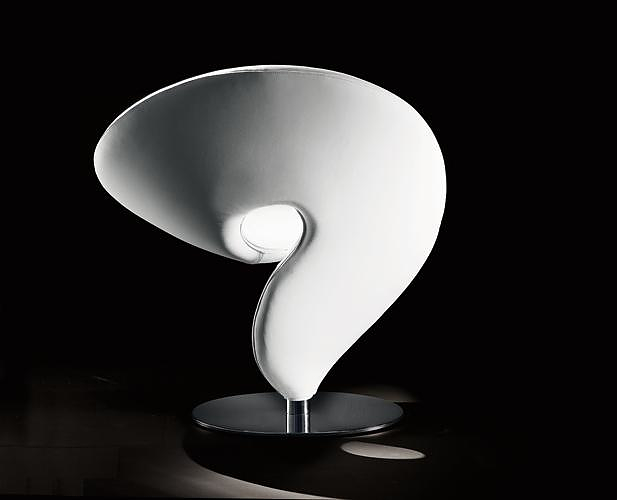What is topinambur English?
What is topinambur English?
The
Jerusalem artichoke (Helianthus tuberosus), also called sunroot, sunchoke, wild sunflower, topinambur, or earth apple, is a species of sunflower native to central North America. It is cultivated widely across the temperate zone for its tuber, which is used as a root vegetable.
What does Topinambur taste like?
What It Looks and Tastes Like. It is a brown root resembling ginger root. It bears no resemblance to a traditional artichoke and tastes
slightly nutty like a cross between an artichoke heart and a potato.
Is topinambur syrup good for you?
Topinambur Syrup Sweetener is a
healthier alternative to other liquid sweeteners. It is low in glycemic, zero cholesterol, and low calorie with a naturally sweet flavor. It is a sweetener for your favorite beverage, but equally delicious in cooked and baked goods.
Are Jerusalem artichokes good for you?
Jerusalem artichokes are an
excellent source of potassium and a good source of iron. Also of nutritional note is a particular fiber that Jerusalem artichoke contains in abundance, called inulin. Inulin is a type of soluble fiber that balances blood sugar, and also acts as a prebiotic.
Do sunchokes give you gas?
Redzepi never serves the tuber raw because
inulin, the carbohydrate found in sunchokes, can cause serious gas and bloating — hence the nickname. ...
What is a Sunchoke vegetable?
Sunchokes are a
tubular-shaped, thin-skinned root vegetable of the sunflower plant family that's in season from late fall through early spring. Often mistakenly referred to as Jerusalem artichokes, sunchokes have no origins in Jerusalem, and they really don't taste like artichokes.
Can you eat the skin of Jerusalem artichokes?
Jerusalem artichoke skin is edible, and has a strong, earthy flavour that some people love, and others find a bit overpowering, so whether or not you peel your Jerusalem artichokes is really a matter of personal taste. ... Peeling them, on the other hand, can be a little tricky, due to their uneven, knobbly shape.
What is the difference between an artichoke and a Jerusalem artichoke?
What are Jerusalem artichokes? This vegetable is not truly an artichoke, but a
variety of sunflower with a lumpy, brown-skinned tuber that often resembles a ginger root. ... Jerusalem artichokes are also known as sunchokes.
What is topinambur syrup?
Topinambur Syrup Sweetener is a
healthier alternative to other liquid sweeteners. It is low in glycemic, zero cholesterol, and low calorie with a naturally sweet flavor. It is a sweetener for your favorite beverage, but equally delicious in cooked and baked goods.
What is artichoke oil good for?
Artichoke extract is sometimes used to treat a variety of health conditions. For example, some consumers use the extract to treat
hangovers, high blood pressure, anemia, arthritis, kidney problems, liver problems, snake bites, water retention, and other concerns.
What part of the artichoke is poisonous?
The remaining parts of the artichoke, the outer portion of the leaves, the hairy stuff at the bottom (called the choke), and the stem, should never, under any circumstances, be eaten.
No parts of the vegetable are poisonous, but attempting to eat an entire artichoke can have serious consequences.
Are sunchokes healthier than potatoes?
Although they're sweet, their starchy fibre stops any spikes in blood sugar levels – indeed they have a
lower glycemic index (GI) score than potatoes – and they aren't fattening.
How do you know when sunchokes go bad?
How to tell if Jerusalem artichokes are bad or spoiled? The best way is
to smell and look at the Jerusalem artichokes: discard any Jerusalem artichokes that have an off smell or appearance; if mold appears, discard the Jerusalem artichokes.
Do sunchokes cause gas?
Redzepi never serves the tuber raw because
inulin, the carbohydrate found in sunchokes, can cause serious gas and bloating — hence the nickname. ...
What is the difference between sunchoke and artichoke?
They're all vegetables, share similar names, and belong to the same family of plants (aster). But sunchoke and Jerusalem artichoke are
just different names for the same thing — an edible tuber that looks similar to ginger — while globe artichokes (i.e. common artichokes) are altogether different.
How do you relieve gas from Jerusalem artichokes?
Modern science concurs: “Boiling Jerusalem artichokes in an acid such as lemon juice or vinegar will hydrolyze the inulin to fructose and small amounts of glucose,” Rastall advises. So I gave it a try,
boiling quarter-inch-thick sunchoke slices for 15 minutes in just enough lemon juice to cover them.
Is any part of an artichoke poisonous?
QUESTION: Are artichoke leaves poisonous? ... The only part you can't eat is
the hairy choke inside, and the sharp, fibrous outer portion of the leaves. The choke is not poisonous, nor is the tough part of the leaves, but it is a choking hazard, and quite aptly named.
Why is artichoke bad for you?
Artichokes are low in fat while rich in fiber, vitamins, minerals, and antioxidants....1. Loaded With Nutrients.
| Raw | Cooked (boiled) |
|---|
| Protein | 4.2 grams | 3.5 grams |
| Fat | 0.2 grams | 0.4 grams |
| Vitamin C | 25% of the RDI | 15% of the RDI |
| Vitamin K | 24% of the RDI | 22% of the RDI |
Are artichokes bad for kidneys?
This study shows that artichoke is beneficial not only against HC but also
against HC-associated renal damage and elevated blood glucose levels.
What happens if you eat the choke of an artichoke?
The
choke in the middle will become the blossom, and the spiny leaves of the exterior support and protect the flower. The large outer leaves, tender heart and firm bottom are all tasty; even the stem can be peeled and eaten. ... The choke and the fibrous portion of the outer leaves should be discarded.
